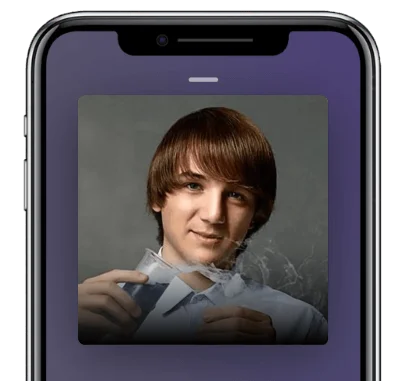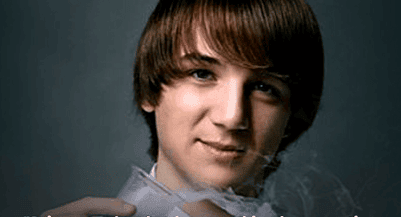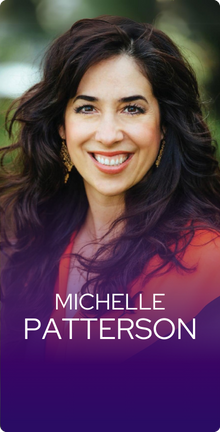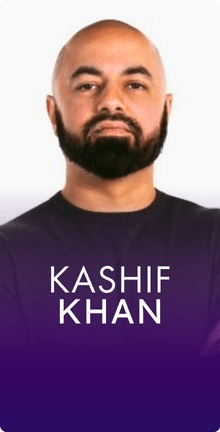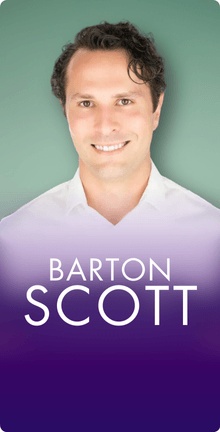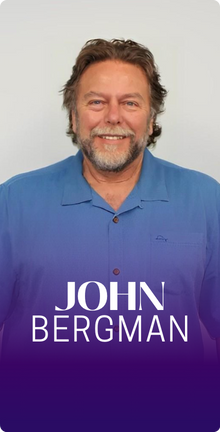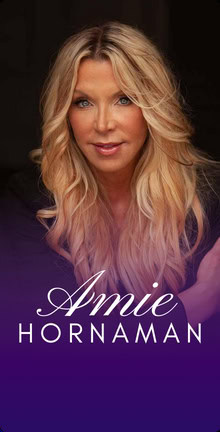In this Episode
- [01:35]What spurred Jack’s discovery, and how was he able to pull it off as a teenager?
- [02:21]Jack explains his invention in more detail.
- [03:17]Because it takes a while to get medical technology on the market, Jack’s invention isn’t yet fully in use.
- [03:53]There are several other tests currently under development, but Jack hasn’t heard of any that can detect cancer as early and accurately as his.
- [04:41]Jack talks more about the process of developing his invention and finding a lab and mentor. He then describes going through the interview process at the lab, as well as how the funding worked.
- [07:51]Jack discusses the Intel ISEF, in terms of what it is as well as his own experience there.
- [09:37]We hear about Jack’s experience speaking at TED.
- [10:33]Jack talks about Singularity University, which he describes as “probably one of the coolest places in all of Silicon Valley.”
- [12:56]Jack shares some stories about his at-home experiences with science and the experiments he’s done with his brother — including the time he accidentally gave his family food poisoning, and the fact that he and his brother got his mom onto the FBI watch list.
- [17:30]Stephan shares a quote by George Bernard Shaw: “The reasonable man adapts himself to the world: the unreasonable one persists in trying to adapt the world to himself. Therefore all progress depends on the unreasonable man.”
- [18:37]We learn more about nanorobots, what they are, and what they can do.
- [21:47]What is CRISPR, and how is it being used? In his answer, Jack explores just how incredibly powerful this tool is.
- [25:15]Stephan brings up the functions of genes, which Jack then explains in his own words, clarifying how DNA works.
- [28:16]Jack touches on the ethical debate over whether we should have “designer babies” by modifying an embryo’s DNA.
- [30:13]Are we able to connect these nanorobots to the internet, in the sense of the Internet of Things?
- [31:36]We return to biosensors, with Jack talking about the project he’s working on right now that can test for biocontamination.
- [34:01]Jack talks about how his technology can be expanded to various diseases.
- [34:37]Why did Jack choose Tanzania as the place to launch his test?
- [35:57]Jack explores how his technology dovetails with water filtration systems and helps people lift themselves out of poverty.
- [36:59]Jack describes a big current trend in disease diagnostics for moving from symptom-based diagnostics toward molecular-based diagnostics.
- [39:53]Stephan and Jack talk about what the term “proteomic” means.
- [40:28]Why does Jack’s biosensor work with pancreatic, lung, and ovarian cancer, but not with breast cancer, for example?
- [42:35]Jack gives a loose timeline for when he hopes his biomarker panels will be generally available.
- [43:34]Is the test available outside the USA, where the FDA regulations don’t apply?
- [44:36]Jack discusses the other research he’s working on, then explains how he got the idea for the topic.
- [48:14]Beyond what has already been discussed, where does Jack see the future of medicine heading?
- [49:32]Jack discusses whether surgical skills will still be relevant in ten years, or whether it will become the realm of robots by then.
- [50:55]Where can people find out more about Jack? He suggests his website or his Twitter.
It’s great to have you, Jack. Thanks for joining us.
Thank you so much for having me.
Let’s start with biosensors because that’s what you’re most famous for, having invented this very inexpensive biosensor for detecting cancer. What spurt on this discovery of yours and how were you able to pull it off as a teenager?
I got really interested in detecting pancreatic cancer actually after a close family friend, who was like an uncle to me, passed away from the disease when I was about 13 years old. After that, I began just poking around on the internet and I found that really there is no way to detect these cancers until it’s far too late, when it’s already spread and the patient has less than a 2% chance of survival rate. I decided to set out in our eighth-grade biology to change how we did cancer diagnostics and I ended up with this paper sensor for pancreatic cancer.
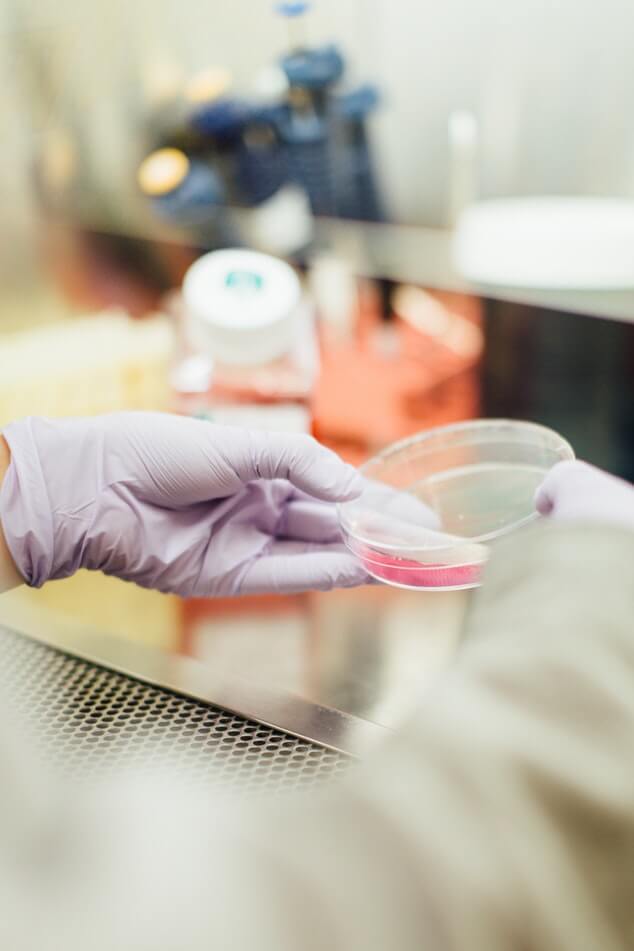
Amazing. The paper sensor is based on what? There are substrates there that you’ve put some sort of antibody on that?
Yeah. It’s just a piece of regular filter paper and then you put a solution of what are called carbon nanotubes. These are long, thin pipes of carbon, they’re an atom thick, and they’re 1/50,000 diameter of a single strand of your hair. They’re extremely small and they have these incredible properties. They’re stronger than steel and can conduct electricity better than copper. They’re superheroes of material science right now. I was obsessed with them. All you do is you take some of these carbon nanotubes, you mix them into a solution of water, throw in some antibodies which are essentially a lock-in key that only react to one specific protein, in this case, a protein that signifies whether or not you have the cancer that’s found in your bloodstream. Then what happens is just mix it up, mix it up in some water, you take some paper, dip it, dry it, and then you can detect cancer.
Amazing. Is this in general use now? Is it generally available?
No. As you know, microtechnology takes a bit longer than that to get onto the market. Right now, we’re trying to further improve the sensitivity and selectivity of the task, as well as increase its durability in the field. For example, it wouldn’t need refrigeration and be easy to use at home. That’s what we’re currently working on.
This reacts with the blood. Is this basically the only option for detecting the early stage of pancreatic cancer or is there another test that has a pretty good detection rate?
Right now, this is in the preclinical phase where we’re still trying to improve it and it’s showing a lot of really great promise at being able to detect these cancers in the very early stages. For 90% accuracy, it could detect cancer when someone has close to 100% chance of survival, very exciting preliminary results. There are a couple of other tests that are currently under development but I haven’t heard of any that have the same ability to detect cancer very early and very accurately as this one.
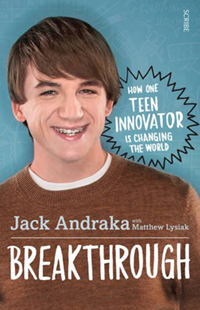
Amazing. Let’s talk more about what happened when you tried to find a lab to work in, to do your research, and you were an eighth-grade student at the time so it’s hard to get access. It was an effort for you to get an opportunity like this, right?
Yeah, yeah. It was actually incredible. I came up with this idea in my eighth-grade biology class. I wrote this giant procedure to 200 different professors at Johns Hopkins University and the National Institute of Health. I essentially was just asking, “Can I please work in your lab?” Really trying to get the resources I needed so I just called all of these professors. I got 199 rejections but finally, one professor, Dr. Anirban Maitra at Johns Hopkins University, accepted me into his lab. After months and months of hard work and nights and nights spent in the lab, I finally ended up with this paper sensor.
Tell us a bit, how was it to get interviewed by these guys because he didn’t just accept you to be part of his lab just from the letter that you sent him. You had to get interviewed and all that, right?
Yeah, exactly. I had to go through this entire interview process. Basically, it was the entire lab in a small room and they just grilled me about each and every aspect of my procedure. I was very confused a lot of the times about what they’re talking about because I didn’t know that much about cancer biology at the time. I knew my project really well but didn’t really know a lot of the nitty-gritty parts of cancer biology. It was definitely a nerve-wrecking two hours but eventually, I stuck it out and I answered all of their questions. I was able to get access to their lab but it definitely was a process.
It’s expensive to provide all the reagents and everything the equipment and so forth. Basically, he didn’t just take you under his wing and say, “Hey, you can have access to the lab as a place to work.” He basically had to fund your research, right?
Yeah, exactly. As a ninth-grader, I had no access to scientific funding. He really took a risk on me. I’m so grateful that he did because it’s really exciting what’s been going on.
Yeah, it’s amazing. If he hadn’t have taken you in, you got 200 rejections instead of 199, a paper sensor for detecting pancreatic cancer very likely wouldn’t exist, right?
Yeah, probably not. I might have kept pushing but I definitely was at the end of the line with this acceptance. It’s a good thing that he accepted me into the lab.
Yeah, pretty incredible. Then you went on to win the Intel ISEF, the International Science and Engineering Fair. Tell us a bit about that whole experience because you became internet famous for going on up on stage and having an exciting moment there with accepting the award. I saw that. It was amazing. I think the whole world was rooting for you when that video went viral.
Yeah. To give you some background about what that was all about is the Intel International Science and Engineering Fair is the largest science fair in the world, over 76 countries, and over a total of 6 million people trying to qualify and compete in the science fair. I got into the final round. It was 1,500 people from all over. It was just this grueling week-long of judging. I was on my feet 12 hours a day just answering all these questions and presenting my research. All of the other projects, they are just insane. There are people making nuclear power plants, just crazy things, all these advanced theoretical physics. I thought I had no chance of placing or doing well at the science fair. It’s just been really my childhood dream just to go and then I got called up and I won and so I freaked out. I ran up on stage crying and screaming. I still can’t believe that happened to me.
Yeah, that’s amazing. What did that open up for you? You got some prize money I guess and stuff but there were some amazing opportunities exposure and so forth that came out of winning the ISEF.
Yes. I’ve been able to go to the Clinton Global Initiative and talk. I was able to go to the State of the Union as Michelle Obama’s guest. I was able to go all over the world, over 40 different countries to talk. I also got to advance my research. I’m currently working to continue getting it closer to being adapted in the market. It’s just been a crazy whirlwind ride.
Amazing. You also spoke at TED as well?
Yeah, that was an insane experience. Basically, what happened is a ninth-grade leaning up to the science fair. While I was doing my research, one of my AP teachers, they would always show us these TED videos and I was like, “Ah, if only one day I could speak at TED.” And then after I won, TED audition people just emailed me and they were like, “Hey, do you want to try out for TED?” I was like, “Oh my gosh.” Then I got to go and it was an insane experience.
Singularity University is probably one of the coolest places in all of Silicon Valley. It’s all these doers and influencers from all over the Valley that work on all sorts of things.
Great. This was the main TED, not one of the TEDx talk?
Yeah, main TED, it was at Long Beach back in the day. It was a super fun time.
Amazing. That was 2013 that you spoke, right?
Yup.
Amazing. You’re also a faculty at Singularity University. Let’s talk a bit about SU and what that is about and the topics of presentations that you’d presented at SU.
Singularity University is probably one of the coolest places in all of Silicon Valley. It’s all these doers and influencers from all over the Valley that work on all sorts of things. From the founder of XPRIZE to people that are trying to land on the moon, to people who are trying to diagnose diseases. All sorts of super interesting, super cool work that’s being done there. I was invited thereafter winning Intel ISEF. I was able to give these talks and I was able to speak in the faculty of their programs. I talked about the future of medicine, what we’re going to see in terms of diagnostics in the future, how are we going to treat disease in the future, where the disease is really going, this move from communicable infectious disease to really noncommunicable like cancer, Alzheimer’s as we age. Being able to really delve into that and discuss these big ideas with all these amazing people.
Executives come and participate in the SU programs, also graduate students. They have different programs for different people. What did you teach? Did you teach executives? Did you teach graduate students, or both?
I spoke at the Exponential Medicine program or Future Med. That’s why I was talking to a bunch of different healthcare influencers and executives. And then I also spoke at their graduate program a couple of times to tap into grad students and different CEOs from around the world that were writing start-ups, just a whole mixture of crowds.
Listeners, you definitely want to check out Singularity University. It’s an amazing program. I forget if it’s 7 days or 10 days. It’s not inexpensive but it will really prep you for the world that we’re heading into, the nanotechnology, robotics, and artificial intelligence. If you want a deep dive into where we’re going, it’s an amazing program. Let’s talk about some of the fun experiments that you would do in your home and blowing up your backyard and things like that? Let’s regale our listeners with some of your crazy stories.
Me and my brother have always been super, super into science. My mom and my dad are both into science. My mom is a nurse and my dad is a civil engineer so our house was definitively a science household. Beginning sixth grade, both of us started doing these science fair projects and our experiments became increasingly complex and interesting. It really started out with first diving into some interesting experiments when I cultured E. coli and cholera in my basement. Basically, what happened is I turned my downstairs bathroom into an incubator by rolling a space heater in there. I just grow my bacteria in there. I’ve actually cultured them where we make sandwiches in the morning. I just take my low pitch dishes of cholera and eat and puff the giant E. coli, culturing them on my kitchen countertop. Because it was very convenient there because I could just use my stovetop to sterilize all of my equipment. It made this perfect system until I gave some of my family food poisoning.
Not so fun, but the CDC didn’t have to be called inside. The experiment was very interesting. Next, my brother started really getting to high power electronics. I was his dutiful lab assistant there and we designed this crazy experiment, we designed several horrible electronics, the first of which was this microwave gun that would just instantly fry and destroy any electronic that you put in front of it. We accidentally destroyed many phones that were in our pockets when we were doing that. We accidentally put too many of these microwave guns in parallel because we were trying to do this crazy energy focusing experiment. What happened is we got up to about 1 million volts, very high ampere joules, very concerning. Then, what happened is we actually blew the transformer of our entire neighborhood. There’s this giant bam. Then all of a sudden, all of the power went out. All our neighbors were like, “What happened to the power?” We’re just like, “Ah, we have no clue. It’s something with the transformer.” Maybe we never admitted that we blew up the transformer though.
The experiment that actually got us into trouble with my parents was where we made this high-graded explosive, a nitroglycerine on our kitchen countertop.
To this day, it’s our secret, until now. Really, the experiment that actually got us into trouble with my parents was where we made this high-graded explosive, a nitroglycerine on our kitchen countertop. What happened is we were just goofing around. We were just like, “This sounds like a very fun thing to me.” We mixed it up. We decided to make this as a challenge to ourselves. The first step is to make pure fuming nitric acid. We made that in a five-gallon Gatorade container. The acid was so strong it started eating through this Gatorade container, just leaking out everywhere. It was eating our back porch where I go, “Oh my god.” For sure we got it into a glass beaker quick enough and then we started making the nitric glycerine, we made it on our kitchen countertop and we ended up with about liter of it.
Oh my god.
This is a crazy amount of explosive because one drop of it can blow up a brick and it would create a shockwave that knocked my brother over. We had a liter of it. To try hide them and some get rid of it, we just tossed it off our back porch and blew this massive crate in our backyard and whipped out trees. We got very well acquainted with our local fire marshal and FBI after that.
Oh, wow. The FBI must be keeping an eye on you.
Yeah. Between that, we also ordered some uranium through some sketchy Russian back channels. We actually got on the FBI watchlist. Well, my mom did because we used her credit card to buy everything. It’s all good. We haven’t gotten in too much trouble.
Oh my goodness. Your mom’s on the watchlist still or she off of that list now?
Oh no, we’re on it for life probably.
Oh good, good.
We still get the occasional visit.
That’s funny.
They’re really friendly.
No risk, no reward.
Yeah exactly. It talks a lot about interesting chemistry.
Yeah. Certainly, you pushed the envelope in order to discover things. There’s a quote from George Bernard Shaw, I love this quote. “The reasonable man adapts himself to the world, the unreasonable one persists to adapt the world to himself. Therefore all progress depends on the unreasonable man.”
Some of our experiments were a bit unreasonable so I’d have to agree with that.
I think you fit that quote very nicely. Lo and behold, you’ve made amazing progress. Let’s actually talk about some of the other discoveries and things you’ve been working on beyond the biosensor for pancreatic, lung, and ovarian cancer. You’re working with nanorobotics, let’s talk a bit about that. What are nanorobots? What can they be used for? What are the ones that you’re working on specifically used for?
A nanorobot is basically a super, super small robot. It’s about five nanometers in size. That’s about on the order of 1/50,000th to 1/1,000th of the size of a single strand of your hair, its diameter, so extremely small. They’re these very small chunks of material that can do really advanced tasks. For example, they can do all these very interesting computations. Also, it’s a very, very cool powerful application for these nanorobots. They really started picking up around 2010, 2011 when the nano revolution started really taking off. Prior to the most prominent nanorobot out there is the nanorobot by Dr. George Church at Harvard University. It’s made of DNA and they’ve used it to deliver all sorts of drugs to different cancer cells. However, one of the big problems with that is it’s made completely out of DNA. When you put that inside of blood, it can get shoot up by nucleus as these proteins near bloodstream that devour nucleic acids. It has a relatively short, half-life in your bloodstream. It’s kind of problematic for treating cancer if this nanorobot gets eaten up before it even reaches the cancer. That’s where my research comes in. I developed this new class of nanorobots.
You can imagine them as millions and billions of tiny bombs that communicate with each other. What will happen is these bombs will exchange chemical messages in order to coordinate their solo atomic cancer cell. They can do all sorts of very interesting things. They can label your cancer cell, make it glow green so you can see it during surgery. They can actually learn how to treat your cancer over time. I program them with what’s called an artificial neural network. It’s artificial intelligence where it learns just like your eye would and it will learn how to treat your cancer with the best possible treatment combining up to five different drugs at different concentrations. Then what’s really cool is if your cancer grows to be resistant to a certain drug, it will actually figure out that to become resistant to that drug, it’ll switch you over to a new chemotherapy regimen that’s newly optimized while it goes back, and then uses genetic engineering using CRISPR, it’ll knock down that resistance, the cancer is no longer resistant to that drug and that can resume the initial treatment option. It really circumnavigates chemoresistance of this cancer. It’s just super exciting.
Nanorobot - they can label your cancer cell, make it glow green so you can see it during surgery. They can actually learn how to treat your cancer over time. Share on XWow, that’s like science fiction. Amazing. Let’s define CRISPR for our listeners who don’t know what that is because that’s a huge innovation in biotech and the ability to do genetic manipulation. What is CRISPR and how is it being used?
CRISPR stands for Clustered Regularly Interspaced Short Palindromic Repeats, some horrible, horrible acronym that some NASA media-savvy scientist came up with. It is bacteria way, way back millions of years ago. They’ve developed this rudimentary immune system such that when the bacteria cell got attack by a virus, the bacteria would be able to fight off that virus and cut off the virus that’s invading genetic material. The premise of CRISPR is we use that same basic immune system but this time we use it to do genetic surgery on our own genomes. What that means is we can go in with a surgical resolution and go in and take out certain genes and replace them with other genes. For example, in the distant future, let’s say you have some genetic diseases like Huntington’s for example. What you could do is you could use these nanorobots as such target the cells that would be impacted by Huntington’s, go in and get rid of that faulty genes and replace it with a healthy copy of those genes such that you no longer would experience those symptoms of Huntington’s.
That’s amazing. How is CRISPR being used these days? That’s further down the line. It’s going to be in general medicine. They’re doing animal studies now. They’re maybe using it in genetic modification of foodstuffs.
Yeah. It’s been used a lot on like your yogurts, your vegetables, your fruits to make them grow larger, or to make sure bacteria don’t infect them or they’re more pesticide-resistant. Actually, just very, very recently, I believe it got approved for embryos in some instances like preliminary experiments although no super babies yet are allowed. Very interesting things are happening with CRISPR. They’re two big applications. The first of which is the applied application which is using this to treat different diseases and hopefully we’ll get further with that and be able to begin to treat and understand these different diseases like Cystic Fibrosis and different forms of cancer. For me, one of the most exciting things is it’s a basic research ability. What you can do is you can use CRISPR as a very interesting tool in a molecular biologist toolbox where you can go and you can figure out the exact function of a specific gene, which has never been done before, really. It was very, very difficult to do that before. Now, you can do it for a couple hundred bucks almost on your kitchen countertop. It’s really democratizing these very interesting fundamental biology studies where we can really figure out how life is really working. Through that how to treat diseases, how to very understand them, how to predict who’s going to get this and when, just all sorts of very interesting information there.
Let’s say that there’s a gene that we don’t know what it does but it codes for protein. A gene that will get translated into-the DNA is what stores the genetic information in our cells and then it gets transcribed into RNA. From there, into a protein which is a string of amino acids that then fold in the cell into some three-dimensional shape that can be like a lock-in key sort of situation; takes something and does something with that thing. It might transport it, it might change its molecular configuration, or any number of other things. Correct me if I’m wrong on any of that.
The reasonable man adapts himself to the world, the unreasonable one persists to adapt the world to himself. Therefore all progress depends on the unreasonable man. – George Bernard Shaw
Yes. A good way to explain is DNA is the blueprint for who you are. It gives you all the information like what color of hair are you going to have, what color of eyes you are going to have. And then those blueprints are used to create these proteins which are really the movers and shakers of biology. They do all the tough work, everything from helping you breathe, to help you digest your food, to help you run, to help you think and figure out how to solve a problem. Anything you do is reliant on proteins and DNA helps you build those proteins. They allow the genetic diseases, those are caused by your blueprints having a mistake in them, basically a typo in the instructions. You get these faulty proteins and because of that the faulty protein can’t do its function properly. You can get all sorts of very tragic outcome, Cystic Fibrosis for example, where you have this massive fluid buildup that leads to premature death or Huntington’s disease. For example, the BRCA mutation in your genes is one of the big things that leads to breast cancer. A lot of these defacing typos in our blueprints, our DNA, are underpinned a lot of these diseases we encounter. With CRISPR, what we can do is we can figure out what’s a typo and what isn’t because we’re still trying to figure that out. We’ve sequenced the human genome but now we have to really figure out how to read these blueprints, how to read that data, and that’s what’s CRISPR is helping us do. It’s the resetter stone of biology.
Amazing. You can either fix those typos when the embryo is still dividing and before the baby is born in full-term or you can fix those typos once you’re already out in the world and an adult. CRISPR can handle both situations, correct?
Yeah. However, there is right now this big debate about whether or not we should have these designer babies, whether it’s a parent’s choice to modify a child’s DNA. Embryo can’t really consent to whether or not they want genetic culturation. There’s this big ethical debate going on around that. That’s going to be a hot topic in the next few years among emphasis. However, aside from changing genetic diseases, CRISPR has a bunch of very interesting applications in cancer treatment because of the big things that happen in cancer is when you’re treating it with a drug, it can sometimes become resistant to that drug so the drug no longer works. That’s typically because of a genetic mutation, cancer that helps it survive. With this, with the CRISPR system, what we can do is we can move that mutation such that we can treat cancer once again with that drug.
Yeah, amazing. Hasn’t it been problematic in the past for the discovery of CRISPR to go in and fix these genetic mutations, the typos that would yield diseases like say breast cancer. Because you have to change a whole bunch of somatic cells like body cells, it’s not going into an embryo and changing all of its small handful of cells.
Billions of cells.
Yeah, exactly.
It wasn’t really feasible to really dream of knocking down resistance. Before the strategy was, let’s figure out what drugs you’re resistant to, and then treat you with something else then hope for the best. Now, it’s this, we’re able to knock down that resistance so that we can treat you with the very best drug.
It’s amazing. These nanorobots, are we able to connect them up to the internet, like the internet of things sort of situation with these nanorobots in our bloodstreams?
They’re not nearly there yet. Maybe in 20 years, 30 years, but right now my nanorobots, they’re pretty simple, they can do end gates, or gates. What that means is they can really hone in your cancer cells, kind of like a heat sticking missile. Let’s say your cell, what happens is how we differentiate cancer cells from your healthy cells is we look at proteins that are on their surface. They’re like me looking at your face, I can make out these characteristics and be like, “Oh, that’s Stephan,” or “Oh, that’s Jack.” With that, what we’re doing with cancer cell versus the healthy cell. With this, instead of just looking at one of those characteristics, we can look at many. We can look at maybe 10 different characteristics such that we can really hone in and get very targeted treatment of your cancer so that you have much less side effects. One of the big, big things that we’re doing now with my nanorobots is be able to target multiple difference of these characteristics of these cancer cells increase the accuracy of treatments as well as use those from learning how to treat your cancer.
One of the big things that we’re doing now with my nanorobots is be able to target multiple difference of these characteristics of these cancer cells.
Okay. Let’s get back to biosensors. What other sorts of biosensors have you been playing around with besides the ones that are used to detect pancreatic lung and ovarian cancer?
Yes. Actually, what I’m working on right now, it’s one of my really exciting projects. It’s something about the sides of a postage stamp. It could detect 28 different bar contaminants in less than a minute from less than a penny. It’s incredibly inexpensive and it’s incredibly fast, it’s super cheap and it’s also very sensitive it can detect down into the part per truly in range. That’s like if you had a single drop of contaminated water and put it in an Olympic size pool worth of water, I would be able to detect it. That’s how sensitive these are.
Wow.
What you can do with that is you’re able to really crowdsource environmental monitoring in these resource-limited settings because, after a lot about structural adjustment programs that happened especially in Africa, a lot of the environmental monitoring and regulation went on the waste side that led to rampant pollution. The government simply doesn’t have a lot of infrastructure or resources to really get environmental monitoring on the Sinhgad. What you can do with these sensors is you can probably distribute them and then all you have to do is to dip in the water, you snap a picture of it on a camera phone of any type. Cellphones have surprisingly great penetration in Africa. You just snap a picture and then you text it to the service, I’ll instantly analyze it, send the results back, and then it can geotag and timestamp that data point that you sent me. Then, I can collect all these data points from the area and over time I can create this map of pollution. What I can do is I can use these smart algorithms and tell you exactly where certain contaminants are coming from, and then hold polluters accountable for having those contaminants. We’re beginning to launch in Tanzania and just in our first month of trial we are able to have over 500,000 data points collected and hold over 100 different polluting entities accountable.
Wow, that’s incredible. Is that something that you came up with? Was that your idea or was that something that you joined in another team to develop?
No, this is entirely my work. I’m currently doing it at the [00:15:57] lab at Stanford University.
It’s so amazing. You could save countless lives with technology like that.
Yeah. It can be really broadly extended to different diseases like HIV, heart disease, cancers, Alzheimer’s. It can also be used for epidemiology, for example, cancers or screenings of these different diseases and you’d be able to see the dynamics of how these diseases are spread.
Tanzania, is this going to go to all 54 countries in Africa, something like that?
That’s the school hope. However, right now we’re really trying to focus on making as great as it can get in Tanzania and make sure it goes off without hitch. With just Tanzania actually, it’s a really interesting country because of a lot of really great international NGO support. It’s a very well-understood region. We know a lot about the culture, we know a lot about the custom which is great for culture customization such that people are comfortable learning and using this test. Also, there’s a lot of distribution infrastructure in there so we can easily go in and distribute these tests, especially through the World Food Organization. That was one of the big reasons. Also, after structural adjustment program, it was one of the heaviest tick counties especially in a lot of the mining districts, water pollution is very rampant but it was an excellent first ground to test out.
Yeah, amazing. Let’s say that there’s a non-profit that’s providing water filtration systems in Africa, what would you tell that person? Actually I have a friend who runs a nonprofit. It’s in the process of trying to fund multiple water filtration systems in Africa. It sounds like the technology that you’re describing, that you’ve come up with, would be a good ducktail to go with the water filtration system kind of project that they’re working on.
I really don’t like imposing solutions on a region. I really like giving them the tools to lift themselves out of poverty.
Yes. Really, what can help you do is make your intervention very efficient because you can see where the problem areas are, where a lot of the pollution is, where a lot of people are being impacted by that pollution, deploy more water filters there. It’s an intelligence development. I really don’t like imposing solutions on a region. I really like giving them the tools to lift themselves out of poverty and this is exactly what it is. It’s enabling them to be accurate high-quality data such that they can design interventions for themselves and be able to lift themselves out of poverty in whatever way they see fit.
Wow, okay. Let’s talk a bit about disease diagnostics. I know Singularity University is involved in a medical tricorder project. Kind of like take the medical tricorder and does a better job than a human doctor at diagnosing diseases. More generally than just the paper sensors, what do you see that’s exciting in terms of disease diagnostics?
One of the really big trends I am seeing right now is we’ve moved from symptom-based diagnostics into molecular-based diagnostics. We’re really at this very interesting point where we’re making that transition, where we’re able to use all this new information. For example, my cancer blood test that detects the certain biomarkers, that being example of a molecular diagnostic. We’re really beginning to understand how to use that information to properly diagnose someone. I think of the next few years our diagnostic abilities will really just skyrocket. For example, nowadays, what happens is a doctor will look at my symptoms, and let’s say I have a runny nose, a fever, and maybe a cough. That could just be a host of different diseases. It could be flu, it could be several different types of cancers. It’s very tricky to figure out exactly what disease you have. That’s what the molecular diagnostics will really let us do is be able to have a very clear picture of exactly what disease we have and what medication we need to treat that disease. Then, we’re going to do a second revolution because right now we’ve really begun to enter this very interesting time period where we’re getting all this interesting personalized data, where we have your genome, or you also have all this molecular information.
Once we figured out how to combine that through artificial intelligence or through other means, we really have cracked the code of diagnostics I believe because then we can begin to predict when you get cancer, or when you get this disease and be able to predict these different outbreaks of diseases. Through that, we’re really going to go from stage one, stage two, stage three, stage four medicine to stage zero medicine where we’re preventing diseases and that will drastically lower health care cost, which is incredibly exciting because right now we’re really treating symptoms and it’s incredibly expensive, we’re not really often treating the underlying symptoms of diseases. Right now, we’re in stage three or four medicine where it’s treating this disease at very late stages, high cost, very low efficacy. We’re now transitioning into stage one or two medicine where we’re able to diagnose it pretty early and we’re able to treat the underlying causes so it would be lower cost, more efficient. The ultimate goal is in the next 20 years we combine that genomic and proteomic data, we’re really going to reach stage zero and provide the medicine which is incredibly cheap, democratize and we’re really understanding diseases at the fundamental level.
Yeah. For those listeners who don’t know what proteomic means, that means referring to the protein expression of the genes.
Yeah, exactly. Looking at all the different proteins and protein expressions in your bloodstreams all throughout relationships.
I wanted to know why specifically this biosensor that you developed works with pancreatic, lung, and ovarian cancer but not with breast cancer, not with bone cancer, or all these other kinds of cancers.
The secret behind my test is the biomarker you choose. A molecular test that lives and dies based off of what biomarker you’re trying to attack. In this case, I was attaching a biomarker called mesothelin. It was your ordinary run-of-the-mill type protein unless you have pancreatic, ovarian, or lung cancer, in which case it’s found at these very high levels in your bloodstream. It’s also found in the very earliest stages in these cancers when someone has a close to 100% chance of survival. This is a general screening test that you’d go to your doctors, you’d get the test. If you have a positive, that means you probably have cancer of lung, pancreatic, or ovarian. You’re not sure, instead, you go for additional testing, whether that’s an additional molecular test or whether that’s imaging, or possibly a biopsy.
That’s the purpose of this test, is to act as a broad screen test to screen the general population for those three cancers, and then they get additional follow up test. In the future and this is what I’m currently working on, is I really want to hone in on very specific cancers such that you go in and you’d know you have pancreatic cancer with very confidence. Right now I can say you have one of these three cancers, we’re not sure which, go get an additional test. The hope is you have pancreatic cancer, go get your treatment now because that lowers the cost for the patient. To do that, you use what’s called a biomarker panel. All that means is you take a bunch of biomarkers together. For example, I take this class of protein called missense. They are really indicative that you have pancreatic cancer and combine them with for example mesothelin which is the protein that I was using. By looking at those levels and how much they’re expressed, I can tell you that you have pancreatic cancer with a lot higher confidence than the current test I have.
Got it, okay. When do you think these biomarker panels would be available, just generally?
The hope is that we’ll be done researching them the next three years and then hopefully it’ll be able to go through clinical trials after that. However, micro research never goes as you expect so it’s not to be a lot shorter but typically a lot longer than you expect.
Yeah. Once that’s available, would you anticipate people getting screened on an annual basis or every five years?
Probably every year because pancreatic cancer, it’s what we call an asymptomatic disease. It doesn’t show symptoms until the very late stages. It’s really important to catch this as early as you can. I’d suggest once the test comes out that they’ll get every year, though that’s up to the FDA and doctors to decide.
Can you go outside of the US to get one of these screenings now? It might not be perfect but it would catch more often than not a cancer in an early stage.
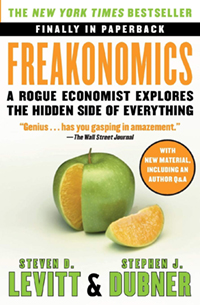
Yes. Right now, the test is at 90% accuracy rate that detect at this very early stage as when you have close to 100% chance of survival. Really what we’re focusing on right now is US market just because I understand that and also I don’t have just billions of dollars to blow on clinical trials all over the world. We’re really focusing on finishing the patent, obtaining the patent because right now we have the PCT in US patent application going and we’re hopefully getting that granted in the coming years. Then the hope is to be able to get this on the market as soon as possible.
It’s good that you have applied for the patent because that’s a big difference between having a patent and not, for sure. As far as your personal wealth is going to be concerned.
Yeah, exactly.
Any other interesting research that you’re working on and any other crazy dangerous diseases that you’re trying to cure or solve or anything like that?
Yeah. My other research is not particularly engineering research, it’s actually this interesting combination of the econometrics which is basically for economics, epidemiology, and anthropology. What I’m doing is I’m looking in the decade before the 2014 Ebola epidemic in West Africa. I’m going through and looking at these datasets and trying to see exactly what systems, what policies really caused the region to be susceptible for Ebola because the Ebola outbreak was just a public health catastrophe, really. 11,000 people died, over 30,000 people were infected. It was insane. I really wanted to figure out exactly what caused the Ebola epidemic to be that serious. That’s actually been very interesting. We’ve been looking at the data, we’ve seen this drastic shift from what’s called horizontal intervention to which is where all these different nonprofits and governments give aid and they’re like, “Okay, you can use this for whatever you want in your health care system.” We’ve shifted from that system into vertical interventions which are basically, “You have to use this funding to make HIV clinics or tuberculosis screening center.” They’re earmarked for very specific tasks. What happened is that really calls all these unintended consequences in the region where it really just decimates their local health care system and left them wide open for Ebola. I have a series of papers and analyses. I’m analyzing the exact causes behind the Ebola epidemic. Hopefully, we’ll be able to submit those for publication pretty soon.
How did you come up with that idea, to study econometrics and the spread of Ebola? What was the cause of it spreading so far?
Actually, it was the required class I had to take. It was about this writing class and they’re like, “Write an interesting paper about globalization.” I didn’t want just to do some boring paper so I decided to look into Ebola and then I got increasingly dragged in. After the class finished I just decided to continue running with it. It’s yielded so many interesting findings. It skewed the health care systems around cities. It also led to a massive brain drain where all the doctors were leaving the region. It was a really shocking post of consequences that came out. Some of these are very of knock to certain policies.
Yeah. I’m familiar with the book Freakonomics, that’s actually one of my favorite business books. There are so many unintended consequences that come from just certain systems, economics, and teachers cheating in public school systems, sumo wrestlers cheating and all that. It’s all based on the incentives that are baked into the system. It’s interesting that you would find a causation chain around Ebola because of econometrics, fascinating.

Yeah, exactly, very interesting, powerful tool to look at all of the consequences of these certain policies.
One more question before we wrap up the interview, where do you see the future of medicine heading beyond what we already discussed with the disease diagnostics, expensive biosensors, nanorobots, and so forth, and CRISPR. What else does our listener need to know in terms of the future of medicine?
I really see the doctor becoming more of a counselor in terms of being able to use all these suites of new technologies, new artificial intelligence, and all those tools I was discussing. Using that, really discussing the consequences and letting their patients know about the consequences. Not so much being trained exactly of how to diagnose diseases because let’s be real in about 10 years completely we’ll be able to outpace humans in diagnosing a lot of diseases. They could do it faster, cheaper, and better. Really, the role of a lot of doctors will shift towards being able to consulting their patients on what the best course of action is and discussing the different consequences of these different treatments. That’s one of the most significant and interesting shifts that I’m going to be seeing in health care. It’s going to be a really exciting ride the next few years to see how we deal that and what will come out of it.
Where do you see surgeries heading and so forth? A lot of these doctors are going to medical screening, learning how to do all these intricate surgeries, all that sort of stuff. Is that even going to be relevant anymore in let’s say 10 years time?
I’m pretty sure it’s going to be relevant for a while. Surgery is one thing that a robot can’t do nearly as well as a human, yet. However, the jury is still out on what’s going to happen there. It will definitely be interesting in the next few years what kind of surgical innovations we come out with but in terms of general health care practitioners as well as a lot other specialty we’re going to see a massive shift in terms of what roles they’re playing in the healthcare system.
This has been an amazing conversation, Jack. I’m just floored by your depth of knowledge and what you’ve been able to accomplish already at such a young age, it just blows my mind that you’re only 19 years old and you’ve made these amazing discoveries just as a teenager. Keep up the great work. I’m very grateful that you’re out there testing the bounds of science and technology, doing amazing things, being the unreasonable man that takes us boldly into the future. If somebody was interested in talking with you further, I’m sure you’re a pretty busy guy so don’t feel pressured to give any contact details but if they wanted to learn more about your research, or work with you, collaborate in some way, where should I direct them to?
You can check out my website jackandraka.com, or my Twitter @jackandraka.
Perfect, thank you.
Yup.
Thank you, Jack. Thank you, listeners. This is I think just a mind-expanding episode so I hope you enjoyed it too. This is Stephan Spencer, your host. We’ll catch you on the next episode of Get Yourself Optimized.
Important Links
- Jack Andraka
- Twitter – Jack Andraka
- Instagram – Jack Andraka
- Facebook – Jack Andraka
- Breakthrough
- Freakonomics
- Intel ISEF
- Singularity University
- National Geographic Emerging Explore
- Carbon nanotubes
- Dr. Anirban Maitra
- Clinton Global Initiative
- TED
- E.coli
- Cholera
- George Bernard Shaw
- Nanorobots

